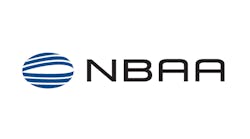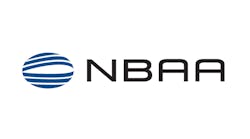Planes Towing Banners Go Up, Must Come Down - Sometimes in Neighborhoods
Framed by blue skies and towed by airplanes, the large banners are hard to miss, drawing lots of attention from the masses enjoying Rhode Island's beaches on a summer afternoon.
But last year, something else — a wave of accidents across the country — drew the interest of the Federal Aviation Administration and prompted publication of a report.
The report provides context on what regulators refer to as "banner towing," the business of dragging a giant fabric advertisement or message by airplane.
The activity has drawn renewed scrutiny in Rhode Island since Saturday, when a Connecticut company's airplane made an emergency landing in a South Kingstown neighborhood.
The FAA report bills itself as an "informational guide" for companies that tow aerial banners with airplanes.
But it's also a window for anyone who might wonder about the risks and complexities of getting banners into the air and bringing them back down to earth.
Most accidents involve difficulties in picking up the banners, problems with towlines for banners or loss of engine power, says the report, which emphasizes "safe operations through careful preparation and planning."
The report suggests a method for picking up a banner after takeoff.
"The pilot," it says, "should visually inspect the grapple line and hook to ensure it did not become entangled in the tail section of the aircraft during deployment."
The plane, says the report, then approaches a set of poles and snags the suspended tow line with the grapple and "maximum engine power is applied."
Pilots should never fly directly over large groups of people gathered outside in open air. When flying around such groups, their altitude "must be no lower than 1,000 feet above the lowest obstacle."
The report warns that an airplane's engine "must work harder than normal" during towing operations; a 10% increase in airspeed produces a 20% increase in drag, demanding more power.
"Banner towing operations will be conducted during daytime under visual flight rules," says the report, citing an FAA rule.
Authorities have provided scant information about Saturday's incident, including whatever caused a Piper PA-25 aircraft to make an emergency landing around dinnertime, 5 p.m., in a yard on Shannon Road in Snug Harbor.
An FAA spokesman, Jim Peters, identified the type of airplane and South Kingstown police provided other information regarding location in a news release without identifying the name of the pilot. WPRI identified the pilot who landed the plane just short of a hydrangea bush as Willord Burke.
No one was injured and the plane did not cause any damage but the craft itself was disabled by the crash, according to South Kingstown police Lt. Mark Sgalia, who could not be reached for additional information on Tuesday.
The tail number of the banner-towing plane links it to Simmons Aviation Services LLC, a company based in Pawcatuck that has logged other crashes over the years.
A subsidiary of Simmons, Banner Tow USA, makes a splashy presentation on its website, promising companies valuable exposure.
The company hangars a fleet that includes six Pipers and other aircraft, including two Cessnas and a skywriting World War II-era plane, says the page.
While the FAA requires banner-towing to take place under conditions that allow pilots to use cockpit instruments as secondary aids to navigation, relying primarily on the view outside, Simmons' web offerings boast of an ability to fly in poor weather.
"Our pilots are instrument-rated," says Simmons' website, "and our planes are instrument-equipped. This enables us to fly through poor weather to arrive at advertising locations unreachable by many of our competitors."
The FAA's investigation of Saturday's emergency landing continues. Mark Simmons declined to comment when reached by The Providence Journal on Tuesday.
In 2012, when a Simmons plane crashed in waters off Block Island, the pilot cited a loss of power and ultimately engine failure, according to records.
The National Transportation Safety Board's report says investigators could not determine the cause of the failure due to saltwater damage. Weather conditions at an airport six miles away from the accident location were conducive to a "serious" icing condition, it says.
Four years later, an engine quit on another pilot flying for Simmons, Jeremiah Ryan Coholan, according to Coholan's hand-written report, which says he had flown along the coast from Watch Hill to Newport at altitudes of 700 to 500 feet.
Coholan ditched the plane off Narragansett, and the NTSB was unable to determine what caused the engine problem, but its inspection "revealed no obvious signs of mechanical anomalies."
Another engine problem preceded a 2009 emergency landing near Simmons' hub at Westerly State Airport, according to an NTSB record.
The board found that temperature and dew point values put the plane at risk of a "serious icing" condition that affects a plane's carburetor, a device that delivers the fuel-and-air mixture to an engine.
———
©2019 The Providence Journal (Providence, R.I.)
Visit The Providence Journal (Providence, R.I.) at www.projo.com
Distributed by Tribune Content Agency, LLC.

